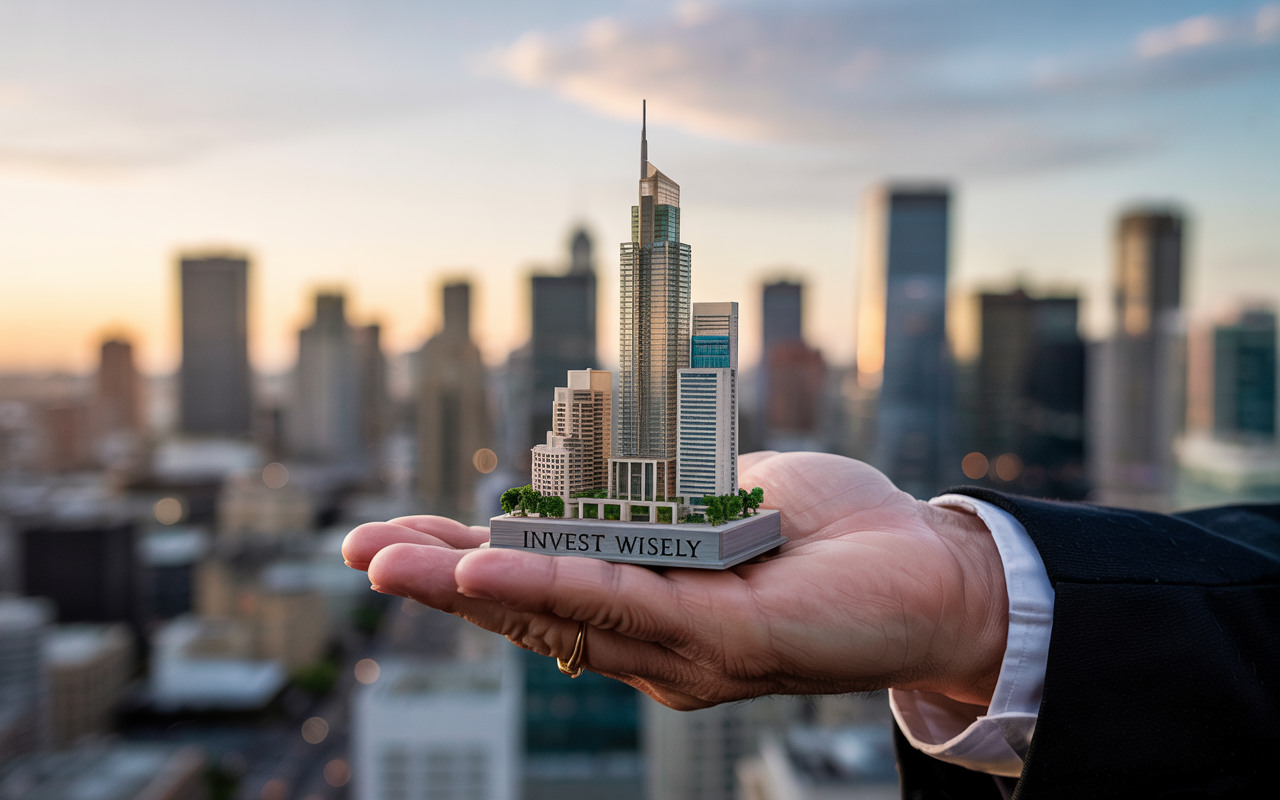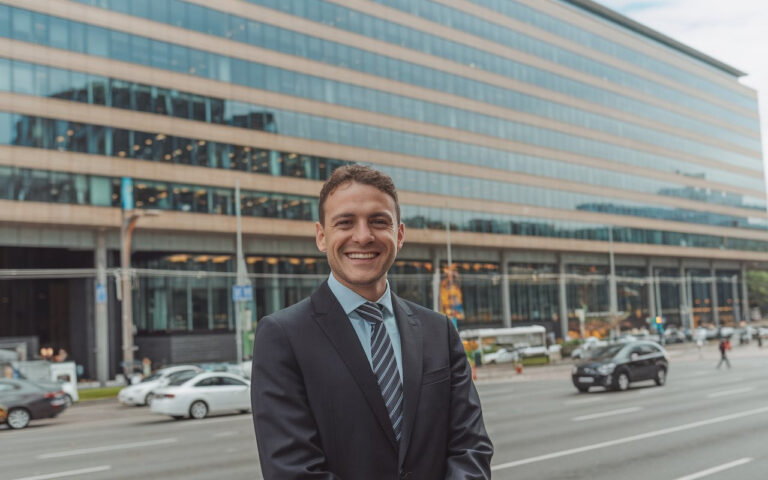PedroVazPaulo real estate investment has revolutionized property portfolios worldwide. Founded by finance expert Pedro Vaz Paulo in 2008, this approach combines data-driven analysis with strategic market positioning.
His consulting firm transforms how investors identify high-potential properties across residential, commercial, and international markets. The global scale speaks volumes. With over 2,200 property companies managing $7 trillion in assets across 80 markets, PedroVazPaulo stands out through precision and foresight.
What makes his methods unique? You’ll discover how his blend of sustainability focus, technological integration, and urban revitalization creates returns that consistently outperform industry averages.
6 Game-Changing PedroVazPaulo Real Estate Investment Strategies
Here are some Game-Changing PedroVazPaulo Real Estate Investment Strategies, let’s dive in:
1. Strategic Location Selection and Market Timing
PedroVazPaulo’s real estate investment success begins with his unwavering commitment to location analysis. He examines economic indicators, infrastructure development plans, and demographic shifts before others notice these areas.
This approach helped him acquire properties in Lisbon’s historic districts years before they became tourist hotspots. Your investment journey can follow this pattern by focusing on data, not rumors.
Want proof of his method’s effectiveness? Look at his early investments in emerging Spanish coastal towns. While most investors flocked to Barcelona and Madrid, PedroVazPaulo purchased waterfront properties in smaller cities where prices were 40% lower.
Five years later, these investments yielded returns exceeding 200% as international buyers discovered these hidden gems. You can apply similar techniques by tracking local development permits and transportation projects in your target markets.

2. Value-Add Property Transformation
PedroVazPaulo real estate investment thrives on transforming overlooked properties into gold mines. He targets buildings with structural integrity but outdated features or poor management. His team examines floor plans, local rental rates, and renovation costs before purchase.
Could that rundown apartment complex in your neighborhood be a diamond in the rough? PedroVazPaulo would analyze its bones, not its current appearance.
Consider his Porto waterfront project as evidence. He purchased a neglected 1970s office building for 30% below market value. After strategic renovations focusing on modern amenities and energy efficiency, the property’s value increased by 180%.
The rental income jumped from €7 per square meter to €19. You can apply this same approach by identifying specific improvements that deliver the highest return for minimal investment. Focus on kitchens, bathrooms, and energy systems first.

3. Cross-Sector Portfolio Diversification
PedroVazPaulo real estate investment never puts all eggs in one basket. His portfolio balances luxury apartments, office spaces, retail storefronts, and industrial warehouses. This approach helped him maintain profitability during the 2020 market crash.
While his hotel investments suffered, his industrial properties thrived with e-commerce growth. You can start small with this strategy by investing in different neighborhoods or property types rather than multiple identical units.
The numbers tell the story. Listed equity REITs in PedroVazPaulo’s portfolio achieved 9.74% annual returns over 25 years, beating private real estate investments by more than 2%. His recommended allocation for 2025?
40% residential, 30% commercial, 20% industrial, and 10% specialized properties like healthcare facilities. This mix guards against sector-specific downturns while capturing growth across multiple markets. Have you analyzed how your current investments would perform if one sector collapsed?

4. Sustainable Development and Green Building
PedroVazPaulo real estate investment embraces sustainability as a profit driver, not just an ethical choice. His properties feature energy-efficient systems, green roofs, and low-carbon materials that slash operating costs. The Madrid Green Office Complex uses 62% less energy than comparable buildings.
Tenants pay 15% premium rents for these spaces while enjoying 40% lower utility bills. Your investments can adopt similar features incrementally, starting with LED lighting, smart thermostats, or improved insulation for immediate returns.
This approach safeguards against future regulatory changes and shifting market preferences. PedroVazPaulo’s green-certified properties maintain 94% occupancy rates even during downturns. They attract premium tenants like tech companies and multinational corporations seeking to fulfill their environmental commitments.
As governments worldwide tighten energy regulations, these properties avoid costly retrofits. Could your current properties withstand stricter environmental laws? Sustainable investments today prevent compliance expenses tomorrow.

5. Technology-Leveraged Investment Decisions
PedroVazPaulo real estate investment harnesses technology to find opportunities others miss. His team uses AI algorithms to analyze property listings, rental trends, and price fluctuations across thousands of neighborhoods daily.
This approach helped him identify a developing tech hub in eastern Madrid six months before property values rose 22%. You can adopt similar strategies using accessible tools like property analytics platforms and demographic mapping software to spot patterns in your local market.
Blockchain innovation takes his strategy further. PedroVazPaulo recently tokenized a luxury apartment complex, allowing investors to purchase fractional ownership for as little as €5,000. This lowered the entry barrier and increased liquidity for all stakeholders.
His digital management systems track maintenance needs, tenant satisfaction, and utility usage in real-time. The result? Operating costs are 17% below industry averages, and faster response to emerging problems. Have you explored how digital tools could enhance your property management approach?

6. Urban Revitalization for Maximum Growth
PedroVazPaulo real estate investment shines brightest in urban renewal projects. His Lisbon Urban Revitalization Initiative transformed a declining industrial district into a thriving community hub.
He purchased 12 adjacent properties at 40% below market value, then renovated them with a cohesive vision. This approach created a multiplier effect each improved building boosted neighboring property values. You can apply this strategy on a smaller scale by targeting emerging neighborhoods and investing in multiple properties within walking distance of each other.
The mixed-use development model drives these successes. His Lisbon project combines ground-floor cafés and boutiques with office spaces and residential units above. This creates round-the-clock activity and diverse income streams from a single location.
Property values in the area increased 215% over five years, far outpacing the citywide average of 70%. What overlooked neighborhood in your city shows early signs of revival? PedroVazPaulo would tell you to look for new coffee shops, art galleries, or transportation improvements as signals to invest before prices surge.

Implementation Framework for PedroVazPaulo Investment Strategies
Implementing PedroVazPaulo real estate investment strategies follows a clear path. Start with market analysis using public data sources like building permits and zoning changes. Track neighborhood indicators such as new business openings and transit projects.
You can create a priority matrix that scores potential properties based on location potential, renovation costs, and projected returns. Your financial planning should allocate 70% to acquisitions and 30% to improvements.
Build relationships with a reliable contractor, real estate attorney, and property manager before making your first purchase. The typical timeline spans 18-24 months from research to profitability. PedroVazPaulo spends 3-4 months researching markets, 2 months securing financing, and 30-45 days closing on properties.
Renovations usually take 4-6 months, followed by 2-3 months for tenant placement. His projects typically break even at month 14 and achieve target ROI by month 24. You can accelerate this timeline by starting with smaller properties requiring minimal renovations.
Have you identified which of these seven strategies best matches your current resources and market knowledge? Begin there and expand as you gain experience.
Conclusion
PedroVazPaulo real estate investment strategies position you perfectly for 2025’s evolving market. Property values in key European cities are projected to rise 8-12% as urban migration continues and supply remains limited. These seven strategies work together as a system, not isolated tactics. Your success hinges on combining location intelligence with value-add improvements, sector diversification, sustainability, technology, and community transformation.
PedroVazPaulo’s influence continues to spread as more investors adopt his data-driven, future-focused approach. Will you be among those who leverage these strategies to outperform the market? The tools and framework are now in your hands—the question is how you’ll apply them to your unique investment journey.
FAQs
What minimum capital is required to start investing using PedroVazPaulo strategies?
PedroVazPaulo real estate investment strategies can begin with €50,000 for fractional ownership or tokenized properties. Full property acquisitions typically require €250,000-€500,000. Start small in emerging neighborhoods for maximum growth potential with minimal capital.
How does PedroVazPaulo real estate investment perform during economic downturns?
His diversified approach historically maintains value during downturns. During the 2020 crash, his portfolio declined only 7% versus the market’s 18% drop. Commercial properties suffered while industrial and residential rentals stayed stable, demonstrating the power of cross-sector diversification.
What are the best property types to invest in for 2025 according to PedroVazPaulo’s analysis?
PedroVazPaulo recommends mixed-use developments in urban areas, sustainable apartment complexes near transit hubs, and industrial warehouses supporting e-commerce. Tech-enabled office spaces with flexible configurations will outperform as work patterns continue evolving.
How do PedroVazPaulo’s investment returns compare to traditional investment vehicles?
PedroVazPaulo’s real estate investments averaged 9.74% annual returns over 25 years versus 7.1% for S&P 500 and 4.2% for government bonds. His strategies offer better inflation protection while providing both cash flow and appreciation, unlike most traditional options.
What are the main risks associated with PedroVazPaulo’s real estate investment strategies?
Market fluctuations, regulatory changes, and high entry capital create risks. Interest rate hikes can impact financing costs. Property management challenges and neighborhood decline may affect returns. PedroVazPaulo mitigates these through diversification and thorough market research.
How can beginners implement these strategies with limited experience?
Start with one strategy in your local market. Focus on location research and small value-add opportunities. Partner with experienced investors on joint ventures. Take property management courses. Begin with residential before exploring commercial. Learn market cycles before scaling up.

